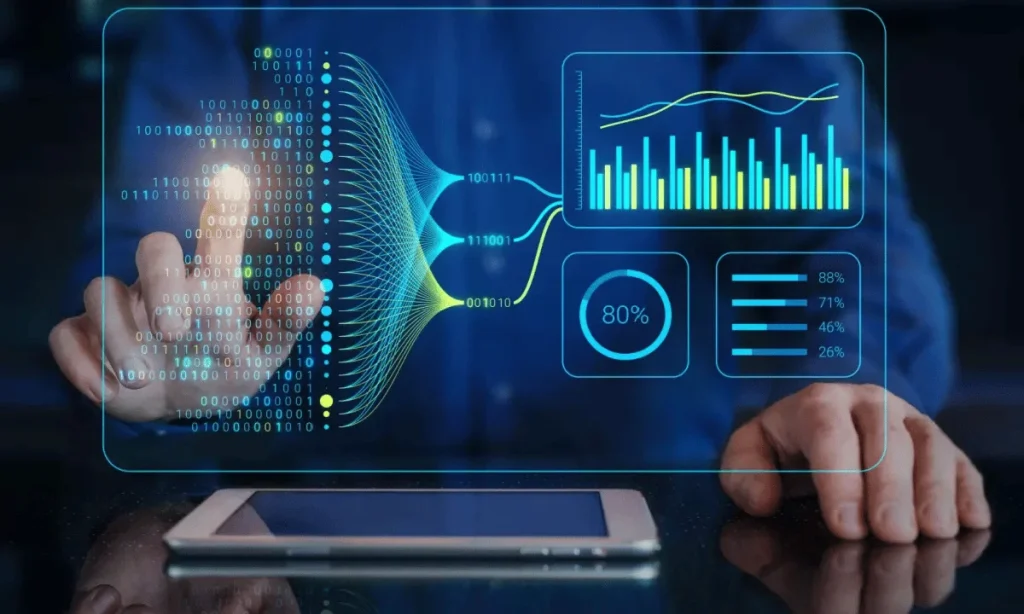
In today’s data-driven world, machine learning is rapidly emerging as the cornerstone of modern data analysis. Organizations across industries—from healthcare and finance to marketing and manufacturing-are leveraging machine learning algorithms to sift through vast datasets, uncover hidden patterns, and generate actionable insights that drive smarter decision-making.
According to recent industry reports, the global machine learning market is projected to reach a staggering $113.10 billion in 2025, reflecting a compound annual growth rate (CAGR) of 34.80%.
The synergy between machine learning and data analytics is not just a trend but a transformative force, automating tedious data processing tasks and empowering businesses to make data-driven choices with unprecedented speed and accuracy.
Research highlights the profound impact of machine learning on data analysis, with studies demonstrating that automated model development and advanced analytics are now integral to sectors like finance, healthcare, and e-commerce. For example, a recent review published in the International Journal of Intelligent Systems and Applications in Engineering details how machine learning streamlines the entire data analysis workflow—from data collection and preprocessing to model deployment and real-time monitoring. As businesses increasingly demand end-to-end AI solutions, platforms like Kaggle and Google Cloud are at the forefront, offering robust tools and resources for professionals and enthusiasts alike.
The Synergy of Machine Learning and Data Analytics
Machine learning and data analytics share a natural synergy, with each amplifying the strengths of the other. While traditional data analysis relies on manual interpretation and statistical methods, machine learning introduces automation and predictive power, enabling organizations to handle complex, high-dimensional datasets with ease.
Algorithms such as linear regression, decision trees, support vector machines, and neural networks are now standard tools for modeling and forecasting in various domains. The automation of data analysis tasks—such as data cleaning, feature engineering, and model evaluation—has significantly reduced the need for human intervention, allowing analysts to focus on interpreting results and generating insights.
Platforms like Kaggle and Hugging Face provide access to vast repositories of datasets and pre-trained models, making it easier than ever for data professionals to experiment and innovate.
For those seeking to deepen their understanding, official resources such as Google’s Machine Learning Crash Course offer comprehensive tutorials on everything from basic regression to advanced neural networks and model fairness6. The integration of machine learning into data analytics workflows is not only boosting efficiency but also opening new avenues for innovation in real-time analytics, edge computing, and IoT applications.
Key Trends and Practical Applications in 2025
As we step into 2025, the landscape of machine learning for data analysis is evolving at an unprecedented pace. Automated machine learning (AutoML) tools are democratizing access to advanced analytics, enabling organizations of all sizes to build and deploy models without requiring deep technical expertise. The rise of generative AI and large language models is further enhancing predictive modeling capabilities, making it possible to analyze unstructured data such as text and images with remarkable accuracy. Edge computing, combined with machine learning, is enabling real-time analytics-a critical advancement for industries like healthcare, smart cities, and autonomous vehicles.
Practical applications of machine learning in data analysis are already making waves. For instance, machine learning models are being used to monitor water quality, track objects in videos, and even distinguish between fresh and industrialized food products with over 90% accuracy1. The ability to process and analyze data locally on IoT devices is reducing latency and enabling faster, more responsive systems. As these technologies mature, the demand for machine learning skills continues to grow, with platforms like Kaggle and Google Cloud leading the charge in education and deployment
